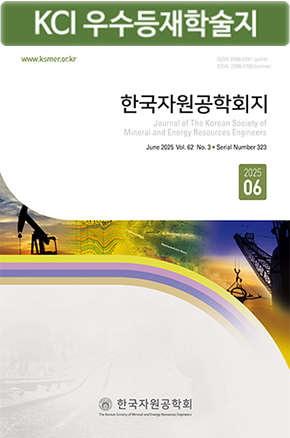Abstract
References
Sorry, not available.
Click the PDF button.
Information
Efficiency of the subsurface-flow treatment system drops with time, as the hydraulic conductivity of the wetland soil decreases significantly due to the chemical reactions with the wastewater, eventually leading to overland flow or flooding. In this study, reduction in the hydraulic conductivities of substrate materials with time was taken into account in the design of the subsurface flow system, using finite element method. As the hydraulic conductivity of substrate decreases below a certain limit set by the inflow rates, installation of perforated pipes become no longer effective. Hence, sufficient hydraulic conductivity of substrate materials is a key parameter for efficiency of constructed wetlands. Also, it is required to design the upper boundary of wetland as an equipotential boundary to induce more flow into substrate layer.
인공소택지의 효율은 기질물질과 광산배수 사이의 화학적 반응에 기인하는 수리전도도의 감소에 따라 점차 저하되며, 결과적으로 소택지의 표면을 흐르는 월수현상이 발생한다. 본 연구에서는 소택지의 설계에 수치해석을 통한 기질물질의 수리전도도 감소를 반영하여 고찰하였다. 기질물질층의 수리전도도가 감소함에 따라 소택지를 통과하는 전체 유출량도 급격하게 감소하며, 특히 기질물질층의 수리전도도가 유입수량에 따른 한계치 이하로 감소하는 경우에는 유공관의 설치도 큰 효과를 나타내지 못할 것으로 예상된다. 따라서 기질물질층의 수리전도도를 일정 수준이상으로 유지할 수 있는 방안이 필수적이다. 또한 정화효과가 기대되는 기질물질층에 많은 유량이 통과하도록 유도하기 위해선 소택지의 상부경계를 등수두경계로 설계하여야 할 것으로 판단된다.
Click the PDF button.
- Publisher :The Korean Society of Mineral and Energy Resources Engineers
- Publisher(Ko) :한국자원공학회
- Journal Title :Journal of the Korean Society for Geosystem Engineering
- Journal Title(Ko) :한국지구시스템공학회지
- Volume : 42
- No :5
- Pages :476-484



 Journal of the Korean Society of Mineral and Energy Resources Engineers
Journal of the Korean Society of Mineral and Energy Resources Engineers








